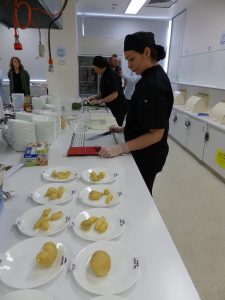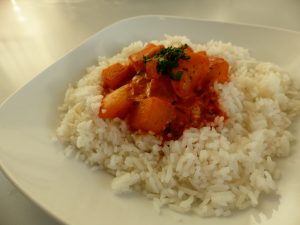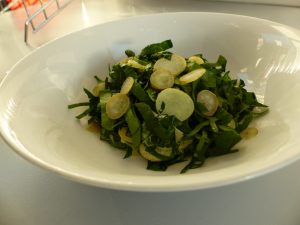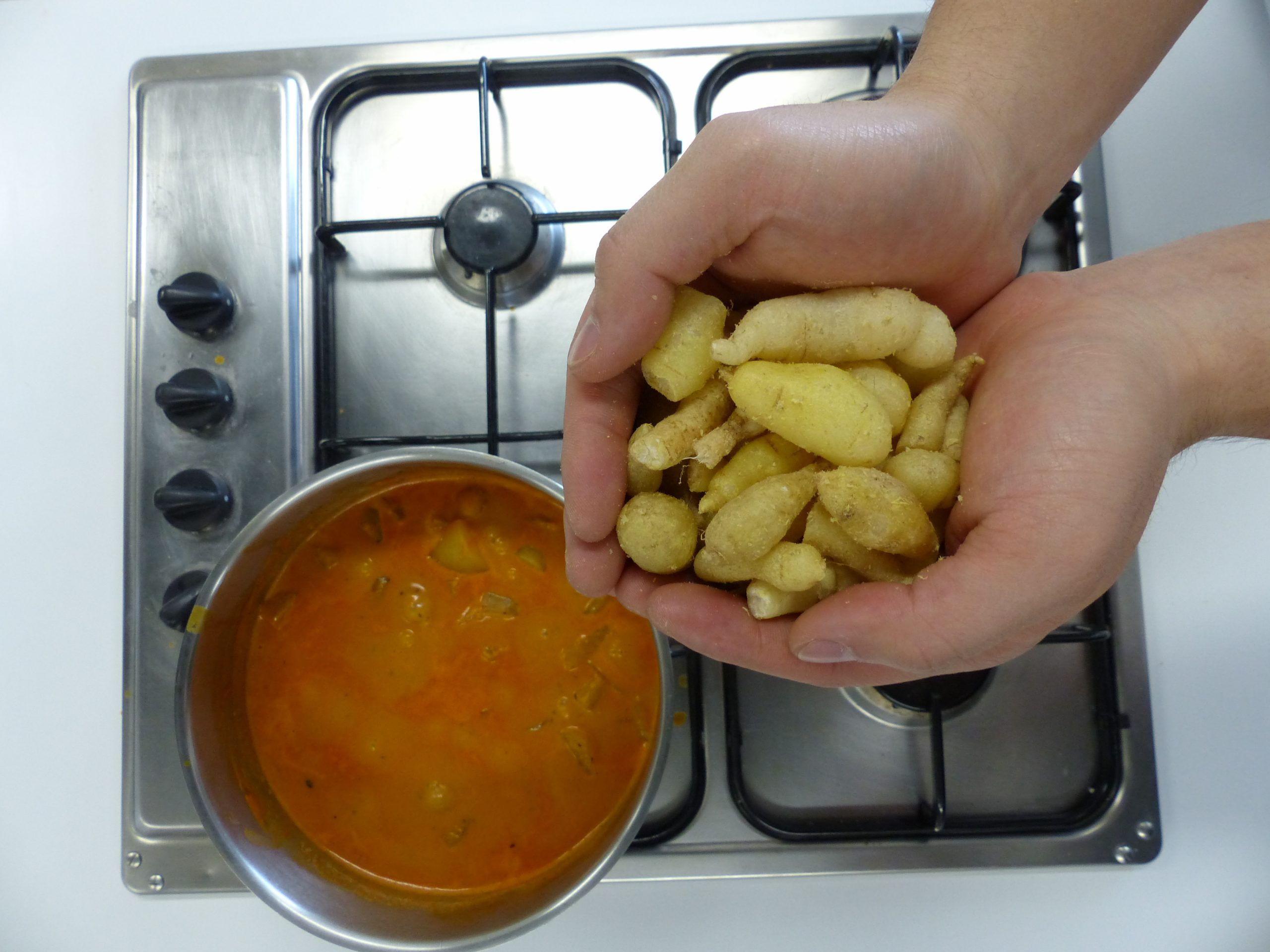Project review: Putting Asian, Australian indigenous vegetables on the plate
Asian and Australian indigenous vegetables were the focus of a levy-funded project that was undertaken from 2016 to 2018. This project was tasked with identifying commercially viable Australian indigenous vegetables and Asian vegetables; assessing their consumer appeal through a range of consumer interactions, including sensory testing; and providing recommendations for industry to ensure the greatest likelihood of success in the market.
In 2016, independent market research agency Colmar Brunton – now Kantar Australia – commenced a project that was designed to identify commercially viable Australian indigenous vegetables and Asian vegetables.
A strategic levy investment under the Hort Innovation Vegetable Fund, Understanding Consumer Triggers & Barriers to Consumption of Australian Indigenous Vegetables & Asian Vegetables (VG15071) was also designed to determine those vegetables that hold the greatest appeal to Australian consumers, and provide recommendations to lead to the greatest likelihood of success in the market.
A multifaceted approach was implemented to ensure knowledge was built upon at each stage and the research objectives were met. This approach included a knowledge audit and review; a qualitative deep dive; a quantitative validation; sensory optimisation; and an action plan for opportunities and recommendations.
Identifying veg
Dr Denise Hamblin is a sensory and consumer insight specialist who led the Colmar Brunton project team. She explained the multifaceted approach that was used.

“We started with a huge list of Asian veg and indigenous veg and herbs, and were able to use those different stages of the research to whittle down to the pointy end as to the ones we were going to put in front of the consumers for sensory evaluation,” Dr Hamblin said.
Researchers identified the top five indigenous and the Asian vegetables to put through sensory testing.
“We were able to prepare and bring these vegetables to life, putting them in front of consumers to see how they responded,” Dr Hamblin said.
“As an example of that, we had lemon myrtle biscuits. We also had youlk – similar to a traditional sweetpotato – featured in a salad as well as in a curry. This showed the different ways of utilising these commodities and putting them in front of consumers to see how they responded to them.”
The sensory testing elicited overwhelmingly positive responses from consumers.
“We’d been working with sensory evaluation for 30 years, and some of these dishes were getting the highest scores we’ve ever seen,” Dr Hamblin said.
“It was really exciting for us to then translate the potential of that back to Hort Innovation.”
Overcoming challenges
Although the project was successful in identifying the great opportunity and much potential around commercialising and expanding the distribution of Asian and Indigenous vegetables in the Australian market, the project team identified lack of supply as a barrier to consumption.

“You can have all the potential in the world, but if you’re not available and consumers don’t know you exist – let alone the benefits, the taste, the functionality and the convenience – you can never realise that potential,” Dr Hamblin said.
“It was so difficult to get product, and I remember it was in the dying hours in the lead-up to the sensory test when the product arrived. We had one small plastic box of the youlk that arrived. It was exciting to see it, but it emphasised some of the greatest challenges in availability.
“The interest is high, and the potential is great, but the availability is challenging. We had to collaborate with others through the supply chain and within the industry to gain access to some of those ingredients to test.”

Dr Hamblin pointed to cultural differences as a barrier, particularly when looking at the indigenous vegetable commodities.
“They have been grown out of indigenous communities by the local people. There wasn’t a huge appetite from the national retailers or any big brands to come in and try to intrude on that or to replace the supply of that – there was a cultural sensitivity in play,” she said.
“There is also a commercial barrier there. For example, with youlk, they were contacting us a couple of months out saying, ‘If the weather is like A, B and C, we should have X amount for you. But if it doesn’t rain or we get some flooding, we’re going to have nothing.’ Small, sensitive supply, and a supply chain that hasn’t been well-established, meant that it was a little tricky to access.”
Further potential
In recent years, Dr Hamblin and her team have been working with Millennium Monitor, a program that keeps track of where social values sit. It looks at the implication of evolving social values on diet types and different types of products, as well as brands and communication.
Since project VG15071 started five years ago, Dr Hamblin said consumer desire for trying new things, and use functional ingredients and products, has intensified.
“We’re seeing this huge increased halo around health – not just physical health, but mental health. People are looking for these natural supplements or food or ingredients that they can work into their everyday life to help empower them to solve these types of challenges and aspects in their lives,” she said.
“We know that is continuing to grow. It plays so beautifully into the potential of these types of indigenous vegetables – some of them do have that functional or health-related benefits, plus they are new and different, and come from Australia.
“We’ve got such a provenance in local urban trends evaporated by COVID and that means that the potential that we saw in 2016 is likely to be even higher. The trends and the evolution of consumers themselves are only playing into more potential in this space. This [the project and its findings] is still as relevant – if not more relevant – in terms of what consumers are looking for.”
Key insights and recommendations
The Colmar Brunton (now Kanter) project team highlighted several points around Asian and Indigenous vegetables following the completion of project VG15071.
- Availability: The prevalence of these vegetables should be encouraged and facilitated in Australian Food Service and Manufacturing based on relevant consumer trends of functional health, provenance and indigenous ingredients. This should lead to a greater consumer demand and broader availability in retail.
- Naming convention: Trial and entry to repertoire will be aided by appealing names such as those that describe the sensory experience (sweet mild radish) or clarify the origin (Australian-grown Gai Lan).
- Education and familiarisation: Consumers have limited knowledge when it comes to some of the vegetables. Information regarding the expected taste and texture, as well as cooking styles and recipes will be essential. Comparing the vegetable to similar tasting vegetables will lift consumer confidence around incorporating them in their cooking.
- Communicating unique health benefits: Highlighting the health and nutritional benefits of each vegetable is congruent with health trends and provides a strong reason for purchase beyond current vegetable repertoires.
- Reaching Younger Consumers: Consumers aged 10-25 were highly engaged with these indigenous and Asian vegetables, found them appealing and expressed the desire for them to be purchased. However, this study reveals that parents are potentially acting as gate keepers, more reluctant to purchase new vegetables for themselves and their family. Further research should be conducted into understanding this barrier to children’s vegetable consumption.
Find out more
Please contact Dr Denise Hamblin at denise.hamblin@kantar.com.
The final report for this project is available on InfoVeg. Click here to access it.
Cover image: Youlk, which is similar to sweetpotato. Images courtesy of Dr Denise Hamblin.

